In Going Home, any American military units heading directly west out of Poland on their way to the evacuation at Bremerhaven will collide with the Soviets.
Continuing from last week’s post, we’ll look at the military units positions in the Soviet zone, and the situation in the south as of October 2000.
PDF available at DriveThruRPG T2000 v1 Going Home |
The Soviet “Front Line”
In Europe, the fronts are static for most of the year. Low troop densities mean that infiltration raids become the most common form of warfare. The “front” ceases to be a line and becomes a deep occupied zone, as troops settle into areas and begin farming and small scale manufacturing to meet their supply requirements.
Twilight 2000 v2.2, page 14
And that’s how the Soviet-occupied zone looks on a map. What caught my eye is that there are little, if any, NATO units opposing them.
Several Soviet divisions – denoted with gray borders on the map – are no longer accepting orders. They’ll either settle down locally for the long term, or attempt to migrate home.
This part of former East Germany will have a lot of Russian-speaking people for years to come.
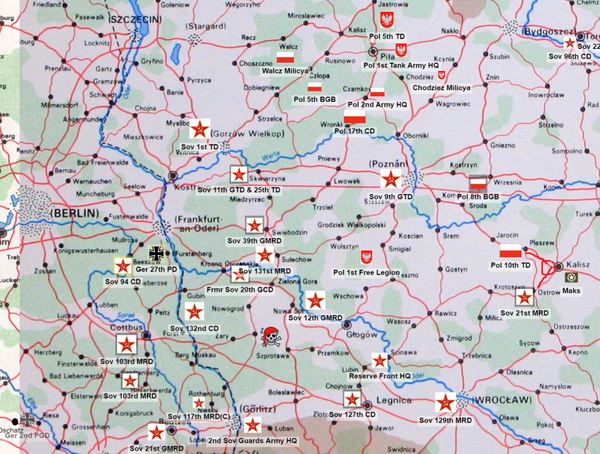
Conditions in this sector have changed a bit since summer. As of July, a few NATO units were in place, near Berlin and south from there. UK 4th Armored Division is shown holding a position near Frankfurt-an-Oder. By October, they’ve all withdrawn.
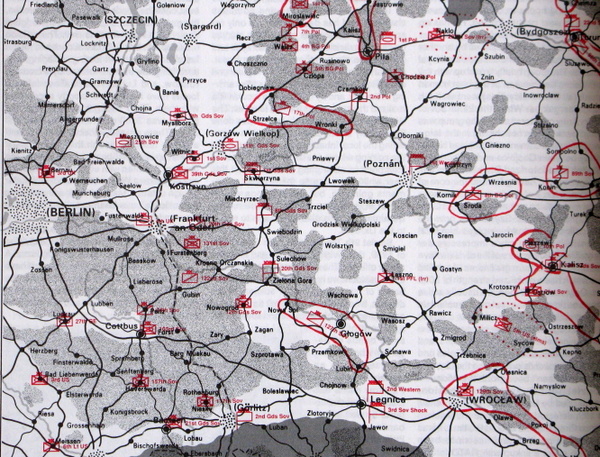
With the exception of a political marriage of sorts.
27th German PD (5,000 men, 12 AFVs): Currently wintering in Beeskow, along with the 94th Sov CD (800 men), who recently defected en masse to the Western powers.
Going Home
Given their numbers, nobody in the area will contest the two divisions, even the few Soviets that might contemplate offensive action.
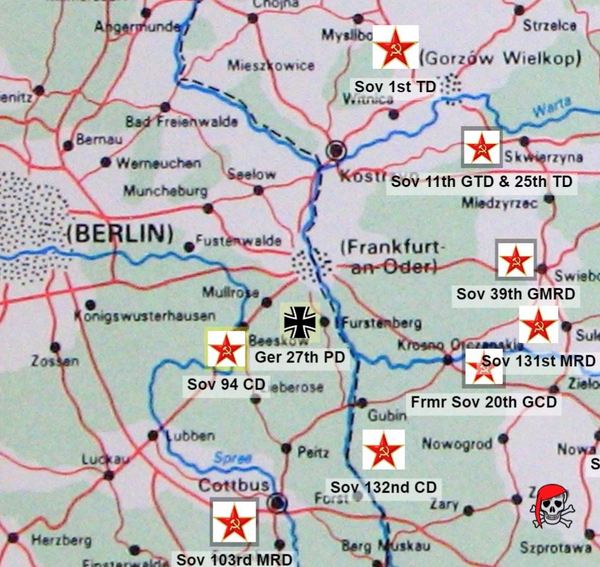
The North
As I mentioned last post, north of Berlin is completely devoid of military forces of either side. It was a sparsely-populated zone (except Berlin of course) even before hostilities, so at the end of World War III, nobody can spare the assets to hold empty territory.
Berlin is a blasted waste, mostly abandoned.
Once capital of Germany, with nearly two million inhabitants, the metropolis of Berlin is now home to a few thousand, who try to eke out a bare living in the parks and open areas remaining in the city. Templehof Airport, near the city, was the target of several small nuclear bombs. The cities several industrial sectors were subjected to severe bombardment. Berlin was never besieged, but several small-scale firefights were fought during the see-saw fighting of 1996-98. Large sections of the city lie in ruins, and the buildings that remain standing are largely empty.
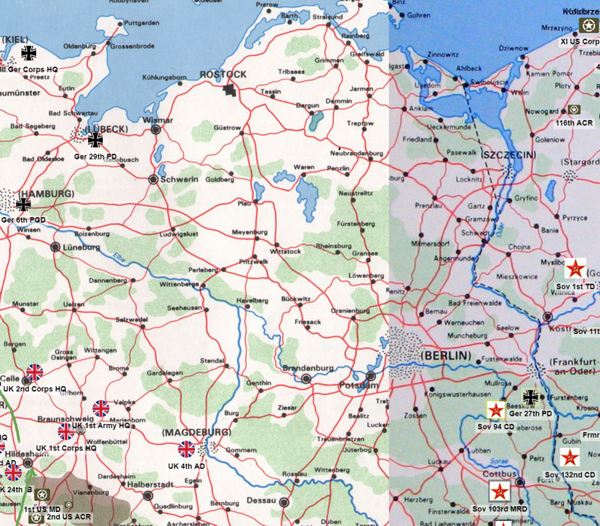
The South
There are many units present in southern Germany, Austria, and Czechoslovakia. This region is not on the Germany map supplied in the Going Home module, and for good reason I think. Players travelling westward from Poland toward Bremerhaven, on Germany’s northern coast, are unlikely to detour so far south.
Czechoslovakia
The Czechs hold territory just to the south of the Soviets in East Germany. They are opposed by German Bundeswehr divisions across the Czech-German border.
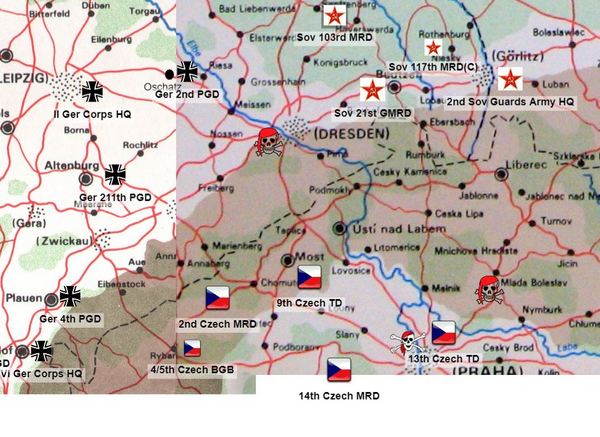
Austria and southern Germany
Far to the south, the Soviets hold Austrian territory in a crescent from Vienna to Graz, extending to Klagenfurt. Three Soviet armies are settling in: 8th Soviet Gds Tank Army, 16th Soviet Army, 41st Soviet Army.
Likewise, the US Army and Germans have (had) a substantial presence opposing the Soviet advance in southern Germany and Austria.
Some American units in southern Germany are not taking part in the evacuation, and plan to remain in place. This includes the 13th US Corps, which sounds like a lot, but there are very few component units under their command.
Most Americans in the south are leaving, however, and its a bum rush!

As you can see on the map, a number of US divisions will be making their way north in October and the first part of November 2000.
This American mass migration will have a huge impact in the swath of Germany in their path.
The 7th US Corps has a head start, and is already reaching the UK-held cities in central Germany.

UK next post: What are they up to, occupying key German industrial areas?
All of the 7th US Corps’ component units (36 US MD, 7 US MD, 2 US ACR) are falling apart. “No longer a coherent military unit,” each unit is noted.
The VAK Project
Going Home spends a half-page laying out a fascinating scenario in Kahl-am-Main, Germany. It’s a reminder of what-might-have-been if Going Home could (should!) have had more than 40 pages.
The 30th brigade of the 44th US Armored Division (current strength 300 men, 9 tanks) has taken up residence in the quiet Bavarian village of Kahl-am-Main, about 15 km east of Offenbach, along the Main River. This village is noteworthy in that it is near a 17 Mw nuclear power station, the VAK Project. The station was the target of a bombing raid early in the war, but it did only minor damage. The surviving station personnel successfully faked extensive damage to the plant (to fool recon planes and prevent further attacks), and managed to shut it down without damage before evacuating…
The remnants of the station staff were transferred elsewhere to deal with other plants, and the station stood empty until a few months ago. One of the former station staff ran into the 30th brigade and discovered that its commander, Major Charles F. Kane, and several others in the brigade were former nuclear power workers. Between them, they decided that the station could be reactivated, using some of the brigade’s generators.
They plan to train more members of the unit to operate the plant. The station has one year’s supply of fuel in situ, and can operate at 1/5 power (2.4 Mw) for another 5 years or at 1/10 power (1.7 MW) for another 10. This is not much power before the war, but in 2000, it is astounding.

See Also:
Here’s our campaign’s Going Home kick-off:


Those maps! So many good memories there.
LikeLiked by 2 people
Lots of memories here, all good. Orcpawn is right
LikeLike
I have really enjoyed your story so far.
LikeLiked by 1 person
Wonderful, thank you!
LikeLike